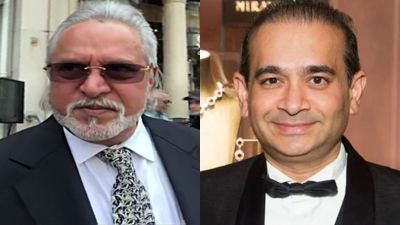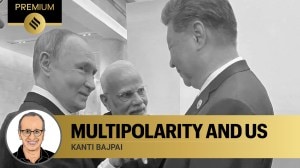The Silences of 9/11
Since the ghastly events of 9/11 three years ago, and the ghastlier retribution that followed, we live in an even more paranoid world. Someh...

Since the ghastly events of 9/11 three years ago, and the ghastlier retribution that followed, we live in an even more paranoid world. Somehow, it’s become more difficult for everyone to feel safe. Except, possibly, George W Bush.
How did artists address this shifty, hyper-vigilant existence? Since I could recall only a few instances that were of interest (and more for the reactions they provoked than the art itself), I decided to explore the Net.
Try it yourself with Google, and you’ll see two trends, each disturbing in its own way. The first is the homage trend. Music and memorials. The families were attending some event or the other. The placidity of these moments of national grieving reminded me that mourning is one of those emotions that appears to have state sanction.
The other trend, also not surprising, meandered towards artistic endeavours that were too provocative to be acceptable. As a result, censorship from patrons began to operate.
The bulky sculpture of well-respected American artist Eric Fischl, created two years ago, showing a woman falling on her head, having helplessly jumped out from one of the trapped floors of the emblazoned towers, is chilling. It was removed just a few days after being installed because of public protest. No one wanted to see the artist’s version of the images they had already seen dozens of times.
Artist Sharon Paz created multicoloured cut-outs of people falling and hung them from a window of an arts institution. Her work was removed before its scheduled ending as well. Other artists were interrogated and placed under suspicion for attempting to bring to the surface the fear that lurked beneath.
Perhaps that is why no really earth-shaking work has been able to interrogate the events of those few hours. No, not even the superstar architect Daniel Liebeskind’s prize-winning proposal for Ground Zero.
Indian artists have created work based on the event as well. Photographer Satish Sharma’s backdrop for a photography project saucily depicted the collapsing twin towers, painted by an Indian painter specialising in backdrop scenes. Clearly, being outside the United States and being a non-American restrained the sense of censorship or outrage he would otherwise have confronted, as would Atul Dodiya, who has painted on a similar theme.
But let’s go back to the few who provoked outrage. Isn’t it interesting how good art works appear to hit home harder than any news clip can? That’s why Hitler mocked and desecrated what he called Degenerate Art, in one of the most visited shows of the last century. Recall Max Ernst’s famous painting where, in a flash of brilliance, he made a creepy demon performing a highly ritualised dance in a battlefield. As he flared his arms and lifted his leg, the demon stood in the shape of a Swastika.
The world is outraged enough, though. Some by the actions in America and others by those of America. What concerns me, honestly, is how little the voices of art practitioners are heard in this din.
Photos





- 01
- 02
- 03
- 04
- 05

























